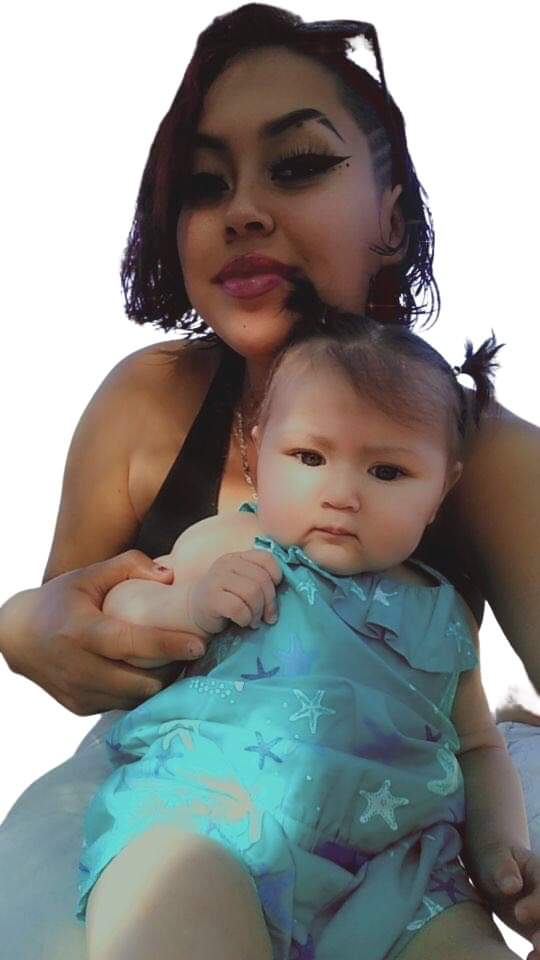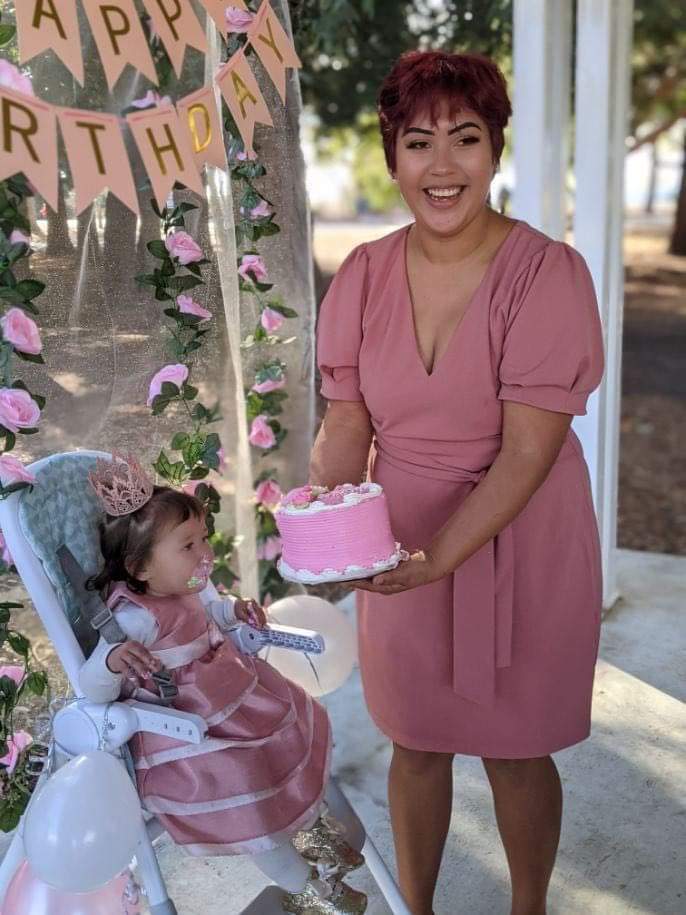
Natalia Cabello was a 17-year-old living on her own with a new baby when the pandemic hit last spring.
She lost her job almost immediately, and her day care center closed. Without child care or internet access at home, she could no longer attend her now-virtual high school classes. Having no food, she took to visiting her grandma’s house from breakfast time to supper each day so she and her daughter could eat.
“I just didn’t have money to pay rent, diapers, stuff like that,” Cabello said. The disruption to her routine and social network had already sent her into a depression when her grandmother moved back to Mexico. At that point, just months into the societal lockdown that would stretch beyond a year, the teen mother lost her main source of support. She and her daughter, Genesis, were taken into foster care together in July.
Nearly three-quarters of California’s current and former foster youth have seen their financial stability challenged during the first year of the coronavirus pandemic, according to a new report from nonprofit John Burton Advocates for Youth. Without the familial safety net many of their non-foster peers can fall back on, 1 in 5 have struggled with homelessness since the start of the pandemic, the advocacy group’s survey of nearly 600 current and former foster youth found.
To help this vulnerable but promising population recover from the unexpected blow, the report’s authors recommend the state government provide youth with direct cash payments, in addition to bolstering investments in existing housing and educational programs.
“The climb to adulthood has always been a steep one for foster youth and the survey findings show that the pandemic has made it even steeper,” Amy Lemley, the San Francisco-based JBAY’s executive director, wrote by email. “If we provide foster youth with the same common sense supports that most families have provided their adult children during the pandemic, we can help foster youth become successful adults and prevent the pandemic from shaping their lives for decades to come.”
JBAY is hosting a webinar April 28 at 10 a.m. PDT to discuss the report’s findings.
Young people nationwide have been relying on family support in record numbers amid the pandemic: More than half of 18- to 29-year-olds in the U.S. were living with their parents as of July 2020, according to the Pew Research Center – a higher proportion than during the Great Depression.
Meanwhile, the dissolution of social networks and closure of school campuses left foster youth increasingly isolated and cut off from supports they’d come to rely on, said Alexis Barries, a youth advocate with JBAY who interviewed young people for the survey.
“Your network, the people you’re connected with – a lot of them were really impacted by the pandemic,” Barries said. “And in turn the youth lose that connection.”
But the single most clear-cut consensus from the youth surveyed was the harm COVID-19 inflicted on their educational progress.
A full 100% reported at least one negative impact on their education, from lacking the necessary technology to struggling with the online format and seeing grades slip as a result. One in 7 dropped out. Those who made the shift to digital-based learning also suffered from reduced access to student services and other on-campus support programs.
Long before the pandemic, foster youth faced bleak statistics as they aged out of the child welfare system, with well-established research finding them more vulnerable to homelessness, incarceration and unemployment, and less likely to graduate college.
Authors of the recent survey expressed concern that the “tremendous gains” in educational attainment made by foster and homeless youth in recent years are now at risk. They recommend expanding access to programs like Guardian Scholars – which provide foster students with academic and social support – and basic needs programs that ensure youth have housing, food and other necessities.
The survey found that parenting foster youth like Cabello have been hit especially hard. Many have lost child care and access to friends and family who helped out, leaving them more susceptible to homelessness, unemployment and academic disruption.

Cabello and her newborn were fortunate to have been renting a room from a sympathetic friend when the pandemic hit. They struck a deal to help the young mother: She could earn her room and board by cooking meals for the household. Her housemate even chipped in to pay for her daughter’s diapers.
“I was really lucky that they helped me through,” Cabello, now 18, said. “Otherwise I would have been starving.”
But plenty of others did not have that support, and even with the help, Cabello was unable to earn money. Many have built up significant debt during the pandemic, and they’re scared about this haunting them long into the future. Survey respondents raised similar themes.
Direct cash payments could help young people cover debts and pay for necessities. California received $47 million for older foster youth in the federal December 2020 coronavirus relief package, and members of JBAY, along with other youth advocates, have requested the funds be provided directly to young people ages 18 through 26, in one-time payments of $1,750 for former foster youth and $1,100 for those currently in foster care.
The study’s authors also recommend increased state funding for housing programs designed for older foster youth, as well as providing these young people with a greater share of statewide projects serving the homeless. In another recent study, the San Francisco group found that less than 1% of the COVID-19-related homelessness funding was directed toward youth.
The report nods to “wise policy choices” by the state government that protected young people from “aging out” of foster care during the pandemic, but said the negative consequences remain so severe that, if left unaddressed, they “have the potential to shape their lives for years to come.”





